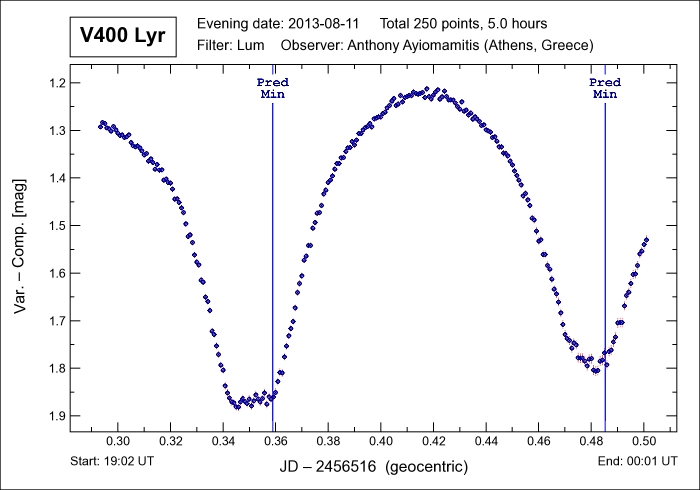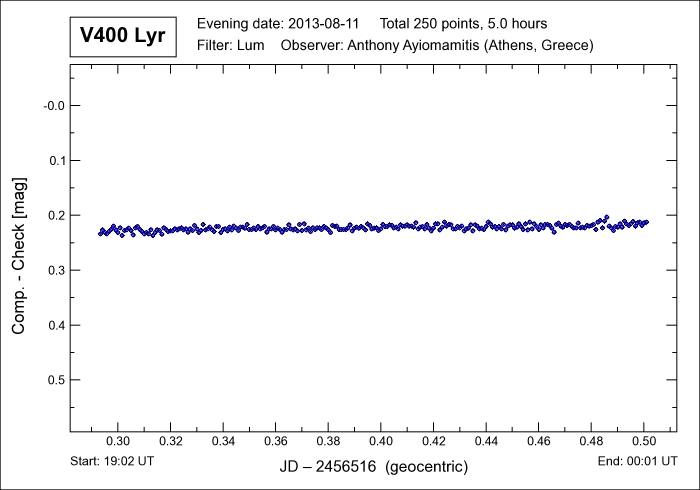
A variable star, as its name suggests, is a star whose magnitude varies intrinsically, in contrast to eclipsing binaries whose magnitude
varies as a result of one star in the binary system eclipsing the other. True variables are one of five types, namely Mira stars, semiregular
stars, cepheids, eruptive variables and, finally, cataclysmic variables. Minimum to maximum magnitude can range from days to many months with
some variables displaying irregular periods.
A popular method for the study of variable stars, particularly short-term variables, is by the use of the technique known as "differential
photometry". Rather than measure the (variable) magnitude of a variable star on an absolute scale, measurements are made over time relative to
one or more non-variable star(s) and these differences are then plotted so as to study and illustrate the relative or differential change in
magnitude. Due to the very large number of variables stars, the field of differential photometry represents one of the key fields in astronomy
whereby the amateur astronomer can make a meaningful and long-lasting contribution to both science and astronomy.
More recently, the search for extrasolar planets (over 925 discovered so far) has identified yet another interesting application for the
practice of differential photometry whereby the minute drops in magnitude of a star hosting an exoplanet are studied. Further details for the
interested party are available here.
Note: The eclipsing binary star V400 Lyr is a quick eclipsing binary variable star with a period of
0.2534283 days and which involves a delta mag of 0.65 (V) magnitudes during this brief time interval. The variable nature of V400 Lyr was first
reported by
Walter J. Miller
in 1969 along with nine other new variable stars while studying plates from the Hamburg, Harvard, Palomar and Vatican Observatories involving
the southern portion of the Cygnus Cloud.
V400 Lyr is an W Ursae Majoris-type eclipsing system where the ellipsoidal components are virtually in contact with each
other and, hence, for its classification, namely "EW".
Further details from the International Variable Star Index are available
here whereas an AAVSO finder chart is available
here.
|
Variable Star: V400 Lyr Other Designation: GSC 3121:1799 RA / Dec: 19h 13m 53s / +38° 06' 56" Magnitude: 12.70 - 13.35 (V) Period: 0.2534283 days Variability: EW Comparison Star: GSC 3121:1548 Check Star: GSC 3121:1662 |
 
|
Date: Aug 11-12, 2013 22:02 - 03:02 UT+3 Location: Athens, Greece Equipment: AP 305/f3.8 Riccardi-Honders AP 1200GTO GEM SBIG ST-10XME SBIG CFW10 SBIG LRGB filters Integrations:
Temperatures:
Software: CCDSoft V5.00.201 AIP4Win V2.4.0 Processing: Reduction Differential Photometry |